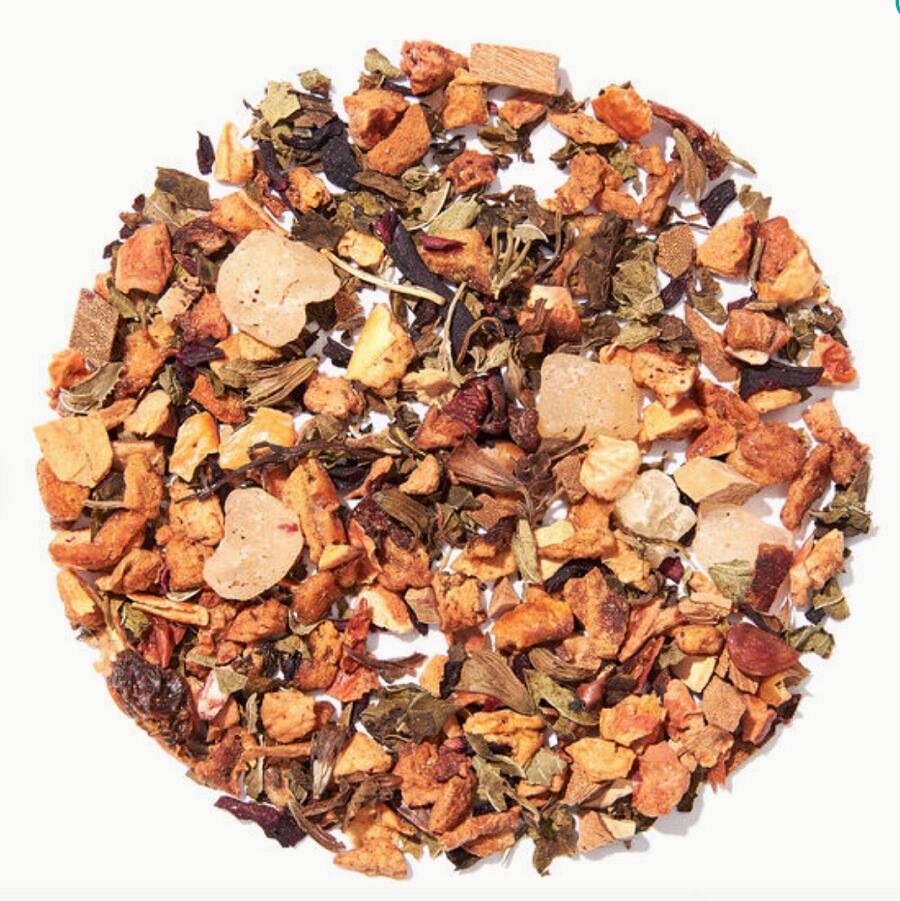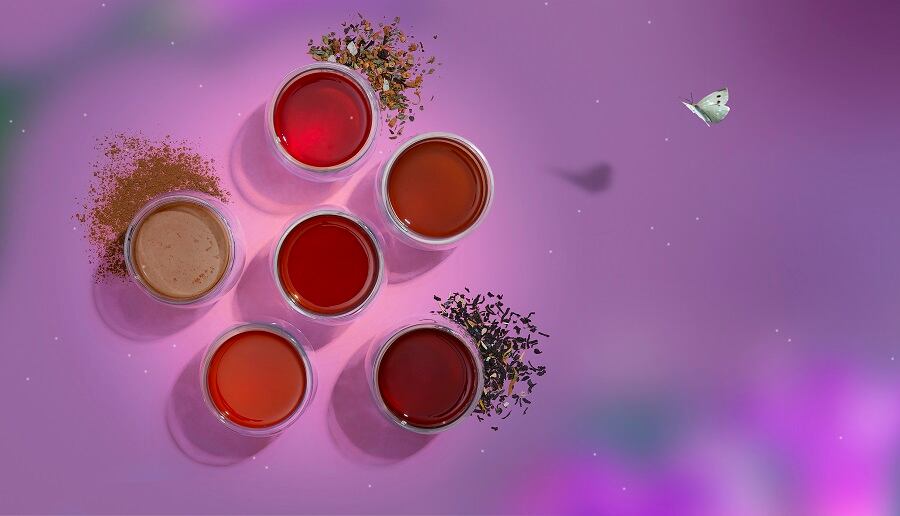As adaptogens continue to shape better-for-you beverages, from sparkling waters to mocktails, consumers continue seeking functionality and flavor with a focus on more nuanced usage occasions throughout the day to fit evolving needs.
With an expected market value of $19 billion by 2032, the adaptogen market highlights cognitive, digestive and immunity-boosting properties, particularly as consumers are looking to improve their mental wellbeing, which was stretched thin during and after the pandemic.
Founded in 2008, Canadian brand DAVIDsTea expanded its retail and online store to carry a wide variety of loose-leaf teas and accessories. Editor’s note: the original story stated DAVIDsTea was acquired by Dr Pepper Keurig in 2019, which is incorrect. We regret the error.
The brand has since focused on growing and expanding its presence in the loose tea space, which includes adaptogenic blends that promote immunity, sleep, relaxation, detox and digestion and energy.
Nadia De La Vega, director of tea sustainability and content at DAVIDsTEA, explains to FoodNavigator-USA how the brand continued to evolve its adaptogenic blends and its alignment with tea’s existing wellness halo:
“Incorporating adaptogens into our line was a seamless fit. We’ve been using secondary adaptogens in our blends since we opened our doors, with ingredients like licorice in our Organic North African Mint, which has been part of our collection since 2008. A few years later, we introduced blends that featured ginseng and schizandra berries, but it wasn’t until 2018 that our R&D team started focusing on the use of primary adaptogens like reishi and tulsi. Tea is intrinsically a wellness beverage, so incorporating adaptogens into our blends just made sense and is aligned with our brand’s vision and passion for blending.”
Medicinal mushrooms gain traction in teas
Formulating tea blends that combine adaptogenic mushrooms, plants and roots presents a unique challenge due to the bitter flavor of these ingredients, particularly as taste continues to reign as the deciding factor among consumers’ beverage preferences. De La Vega emphasizes that popularity in mushrooms is growing, as health experts and consumers are learning more about its broad role in health, including antiallergic, antibacterial, anti-inflammatory and anti-oxidative benefits, among others.
“Recently, we’ve seen a surge in functional mushroom products. Though new to western culture, mushrooms like reishi have been used for centuries in traditional Asian medicine. Much later, in the 1940s the term ‘adaptogen’ was coined by taxonomists to describe plants or fungi that help adapt to stress, however it is only now that the scientific community is really turning their attention to fungi.”
Adaptogens are also seeing a resurgence from the rise of the sober-curious movement, marked by consumers who are seeking health attributes like relaxation, focus and immunity as an alternative to alcohol, cigarettes and vapes. De La Vega notes that tea aligns with this preference given its existing perception of health, flavor and its versatility in promoting a wide range of functions.
“The rise in sober-curious lifestyle has put a spotlight on tea for being a great alcohol-free alternative due to its complexity, flavor variety and flexibility. Adaptogens are known for their calming and relaxing effects that can help your body adapt to stress, whether that means easing into a night of social activities or winding down after a busy workday,” she elaborated.
Developing flavor-and-function-forward formulas
De La Vega explains the R&D process to finalize a flavor-and-function-forward formula takes anywhere between six months to four years as “R&D samples go through several iterations to achieve that balance and nuanced flavor.”
“Consumer response to blends like Reishi Relax and Organic Lavender Earl Grey have confirmed that our flavor-first strategy is performing. These blends are not what you’d expect from a mushroom tea; for example, Reishi Relax is bright and refreshing with tangy berry notes,” she explained.

The brand features adaptogenic blends with benefits like relaxation and vitality to immunity and digestion. DAVIDsTEA is driven by scientific research surrounding ingredients’ health benefits and De La Vega explains how understanding the interaction between different compounds ensures the effectiveness of each blend.
“In terms of ingredient selection, we first work with an idea of what we want the blend to address, whether that is a flavor-based ask or a wellness focus. From there, we select ingredients that balance or highlight specific flavors and benefits,” she elaborated.
The fragrant Ashwagandha Chai tea with cinnamon, ginger and clove flavors is caffeine-free and made with ashwagandha root to help promote calm, and the chai spices help ease digestion; while the savory and earthy flavor of Super Shroom Matcha tea is made with a functional blend of reishi, chaga, cordyceps and lion’s mane, along with L-theanine from matcha to promote focus.
De La Vega elaborated further on the development of the Super Shroom Matcha, “For our Organic Super Shroom Matcha, we highlighted the benefits of L-theanine and caffeine in matcha with the nootropic benefits of lion’s mane. We also took a holistic approach by coupling it with other adaptogenic mushrooms like reishi, chaga and cordyceps for a balancing and focus-driven blend. We also took a holistic approach by coupling it with other adaptogenic mushrooms like reishi, chaga and cordyceps for a balancing and focus-driven blend.”
As the wellness movement continues to expand, De La Vega anticipates other categories to incorporate adaptogens, particularly around low/no sugar and caffeine. “Customers are moving away from highly caffeinated and high-sugar beverages, seeking sugar-free and lower caffeine or caffeine-free alternatives to support their wellness journey,” she added.
Along with its diverse portfolio of tea blends, DAVIDsTEA is expected to launch a new caffeine-free superfood powdered blend, highlighting the growing trend for convenience, functionality and nutrition.
[Editor's note: Interested in learning more about where the functional beverage trend is going? Join FoodNavigator-USA for our free webinar Sept. 20. Learn more and register for the webinar 'Functional Beverages from AM to PM: From energy and focus to clarity and calm.']


